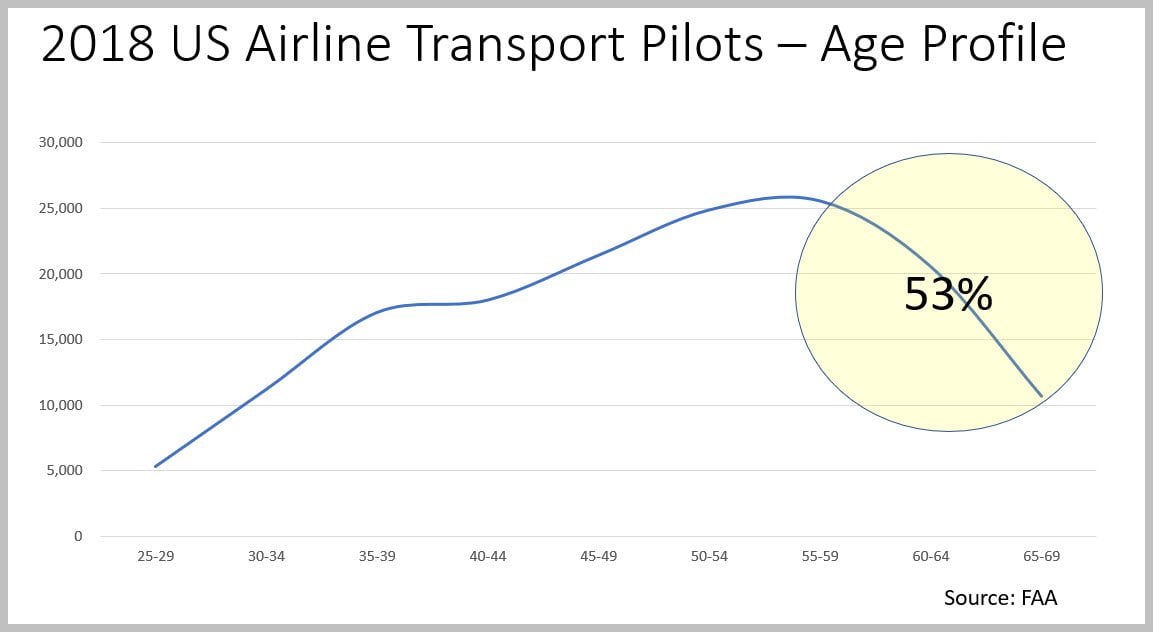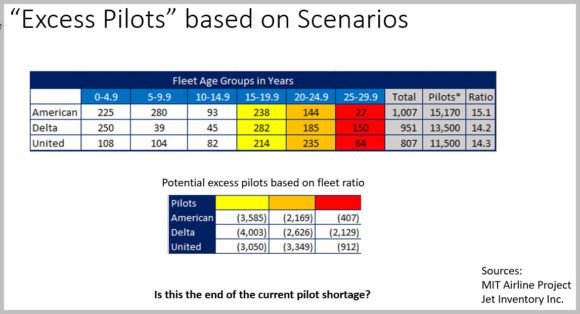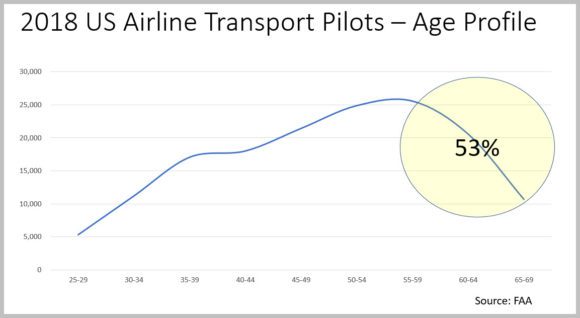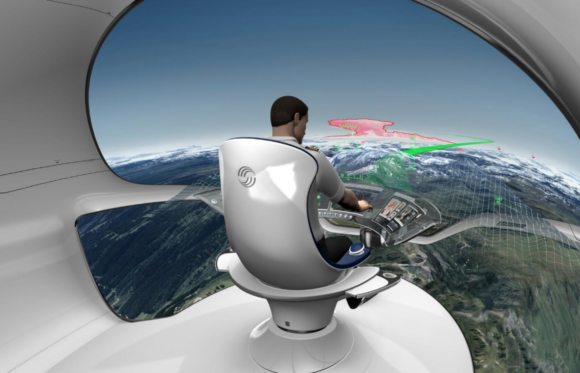
2020 04 13 12 07 58
The US airline industry continues to suffer through its worst crisis. The downstream effects are slowly making their way through the general economy. If there was any question as to this impact of air travel constraint in the era of a service economy, we are likely going to shocked by its size and breadth.
Going into 2020 the considered opinion was the US airlines were facing a pilot shortage. Depending on where your sympathies lie, it was a problem (airline view) or not a problem (pilot view). As we get to Mid-April, neither view matters anymore.
If we look at the big three US airlines, we get a clearer picture. The table below lists these airlines by fleet age and an estimate of each pilot group along with a ratio of pilots/aircraft.
We have three scenarios – yellow (likely), orange (very likely) and red (certain). These scenarios cover aircraft we anticipate will be retired from these fleets. Now, with fleet retirements, these airlines are going to need far fewer pilots. This is how we go from a pilot shortage to excess pilots within eight weeks.
There is another aspect of the story. If the pilots and airlines are able to reach agreements on early retirements, perhaps they can resolve differences amicably. As we can see though, the focus would likely be on the age group of pilots 55 and older. Pilot unions are run according to a seniority program. The more senior you are, the more you are protected from furloughs. Exactly how this will play out among the pilots has to be seen. We understand from one airline, many pilots have agreed to take long leaves and early buyouts.
The good news is that there is a group of pilots that should be easy to work with to slim down the numbers. Let’s assume this process is accomplished without rancor. As the chart above shows though, once that group is out of the market, the pilot shortage returns with a vengeance. Five years from now the US airline industry could be seeing traffic growth back at 2019 levels. But the industry will need to move this traffic with half the pilots it had in 2019.
Moreover, the check pilots are senior – so you cannot get rid of all the senior (expensive) pilots if you plan to restart your network. The pilot part of the labor pool demonstrates the complexity of disrupting the airline business. There is similar complexity among cabin crew and other unionized labor pools.
There are implications for US airline fleets; upsizing will probably be needed. Fewer pilots mean fewer frequencies for the same traffic flow. So bigger aircraft like the A321, 737-900, MAX9, and MAX10 become more attractive. With the 757s retired there are likely to be fleet gaps. The 737NG (and MAX8) and A320, which are the bulk of the US fleet (74%), may not be as attractive and effective as they were at the start of January 2020. And, if you are going to need these larger aircraft in 24-36 months, when do you order them to be ready? Sooner rather than later you’d think. What do the optics look like now, ordering new aircraft even as you park most of the fleet, furlough employees and ask the Federal government for financial aid? (Don’t be surprised if the aid given to the US airlines don’t come with strings attached – i.e. you can only “Buy American” until your loan is repaid.) Public policy and unintended consequences.
The follow on implications include how do airfares react with a probable lower capacity? The airlines are going to love it, consumers not so much. Another implication will be the role of regional airlines and the Scope Clause. We think the current scope limits are in for severe testing, and it is likely that during the period of “excess pilots”, the US airlines will do what they can to ease the current limits at least on aircraft weight.
The restart of the airline industry in the US is going to be fascinating.
Views: 7





